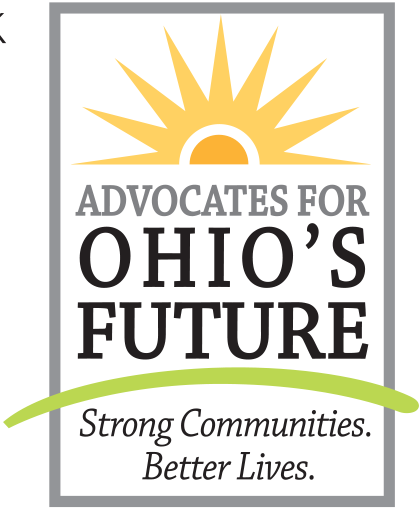by: Sarah Hudacek, AOF Policy Assistant
On Wednesday, Governor Mike DeWine addressed the General Assembly in his State of the State address for the first time since 2019. DeWine covered a number of topics including law enforcement, state parks, companies such as Intel coming to Ohio, highway safety, and more. Here’s what AOF was most encouraged to hear, and some areas where DeWine’s speech missed opportunities to elevate the urgent needs of Ohioans.
Broadband
Governor DeWine mentioned broadband multiple times in his speech, when talking about its role in economic development across the state and the lack of current broadband service in Appalachia. Although the state has continued to focus on the role of high-speed internet in the lives of Ohioans and has offered funding and other supports, it’s estimated that expanding broadband infrastructure to all areas of the state will cost more than $1.7 billion. This amount does not include vital components of access like digital literacy programs, affordability programs, and device access. Though some plans to extend Broadband access are underway, Ohio has a long way to go to ensure high speed, affordable connectivity for everyone.
Mental & Behavioral Health and Substance Use Disorder
DeWine spent more than 20 minutes discussing mental health and substance use disorders in his remarks. From expanding telehealth services, increasing stabilization services, increasing training for first responders, focusing on prevention, expanding community-based and outpatient treatment options, and growing the behavioral health workforce, it’s clear that mental and behavioral health and substance use disorders will be a major focus of the DeWine administration. Over the course of the pandemic, the mental and behavioral health workforce has been strained like never before, at a time when the demand for treatment is growing. AOF and our partners were encouraged by the Governor’s commitment to build the behavioral health and home and community-based services infrastructure and look forward to working with agency officials and the General Assembly to strengthen the behavioral health workforce and expand access to services for all.
Opportunities
American Rescue Plan
Over the past year, AOF has consistently advocated for a transparent, public planning process for the billions in American Rescue Plan funding that Ohio is receiving. To date, there have been no public hearings or opportunities for public input. Despite the historic funding that is coming into Ohio, DeWine’s speech did not mention the American Rescue Plan or any COVID-19 federal funding. AOF will continue to advocate that Ohioans know what their communities need to recover from the pandemic, and all Ohioans deserve a say in how ARPA funds are spent.
Food and Nutrition Aid
We know that Ohio’s foodbanks are facing incredible need, at a time when supply chain disruptions, rising prices, and low donations are making it harder and harder for Ohio’s food support system to serve Ohioans in need. Ohioans are starving, but DeWine’s speech didn’t mention hunger or food aid. The future end of the pandemic will bring changes to the Supplemental Nutrition Assistance Program (SNAP), along with decreased benefits. We can’t leave struggling, low-income Ohioans out of our vision for the state’s recovery.
Child Tax Credit
The expanded Child Tax Credit, which provided monthly payments to Ohio families with children from July to December 2021, ended at the beginning of 2022. Data has shown that not only did the CTC lift children out of poverty last year, but that 3.7 million children fell back into poverty when payments ended. Ohio must invest in children, and AOF would have liked to have seen DeWine address the need for a family support program to replace the CTC.
Child Care
The first three years of a child’s life are the most important developmental years of their lives. Throughout those three years, children need quality child care to set them up for success. Ohio’s child care system is facing a workforce crisis, a funding crisis, and an accessibility crisis. Child care providers are losing educators - who are working demanding jobs for poverty-level wages - and Publicly Funded Child Care reimbursement rates don’t fully cover the cost of services. Due to these challenges, Ohio is coming up short on available Publicly Funded Child Care seats, meaning even children who are eligible for the program may not be able to receive quality child care. Child care is an essential work support for families to recover from the pandemic and establish long-term stability, and Governor DeWine missed an opportunity to address it in his speech.
Workforce Initiatives
Ohio is facing a labor shortage, with many job vacancies lasting for several weeks and businesses desperate for workers. Ohioans need investments both work supports that allow them to return to work, and training for in-demand jobs that pay a living wage with benefits. Our elected leaders need to re-frame the way they think about workforce and help ensure that our front-line workers who kept grocery stores, pharmacies, gas stations, doctor’s offices and hospitals open and who maintained our roads, collected waste, and delivered essentials, at great risk to themselves and their families, can afford to live, save, and invest in their futures.
COVID-19
The Governor’s address celebrated the state’s response to the COVID-19 pandemic over the past two years. Though AOF is grateful for the DeWine administration’s response to the pandemic and their swift actions to protect the health and stability of Ohioans and their families, the Governor’s remarks framed the pandemic and associated challenges as if they were over. We know that many Ohioans continue to struggle to find stability, and that a future variant isn’t out of the question. Now is the time for our state leaders to commit to improving and strengthening our public health systems to be better prepared to weather future variants and other health threats. Investing in long-term prevention and safety measures, like indoor air quality systems in public spaces, now will pay off long in the future.


